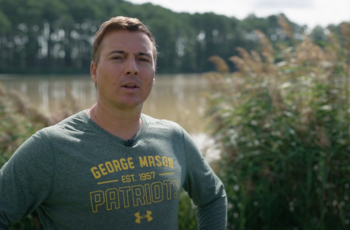In This Story
Coastal communities worldwide are seeing stronger storm surges, more powerful waves, and potential devastation for homes, infrastructure, jobs, and a way of life. Celso Ferreira, an associate professor in the Sid and Reva Dewberry Department of Civil, Environmental, and Infrastructure Engineering at the George Mason University College of Engineering and Computing, studies the impacts of these threats and suggests ways to manage them.
In May 2023 he co-authored a paper, Jobs at Risk: Sea Level Rise, Coastal Flooding, and Local Economies. “This study is the first to evaluate potential future impacts of flooding from sea level rise and climate change to people’s jobs and incomes. This new methodology provides a more equitable analysis of the impacts of climate change and a vision into its potential implications for the region,” said Ferreira.
According to the study, approximately 263,500 jobs and $11.1 billion in wage income will be threatened by 100-year flooding in the Chesapeake Bay region by 2050. The nonprofit Resources for the Future, with whom Ferreira co-authored the paper states, “These (jobs) figures represent 3.3 and 5 percent of all jobs in the Chesapeake region now and in 2050, respectively. The study also identified several flooding ‘hot spots’ around the region—counties and cities in Maryland and Virginia where 25 percent or more of jobs are flood-exposed.”
In addition to quantifying the economic impact, the paper recommends ways to prepare for it. The recommendations include aiming government spending at developing areas outside current and future flood zones; giving coastal communities financial aid but with the condition that businesses are in areas with limited exposure to flooding; providing aid to enterprise zones that incorporates requirements for resilience, such as infrastructure changes to reduce potential flood damage; using FEMA dollars to relocate businesses to different areas within their existing community but out of flood zones; and encouraging communities to change zoning rules to account for climate change.

In a related project with The Nature Conservancy (TNC) and the Maryland Department of Natural Resources (MDDNR), Ferreira and colleagues are assessing the ability of tidal wetlands, marshes, and sea grass beds to absorb storm surges and waves, protecting developed areas.
Ferreira says, “We place sensors that measure wave energy across the coastal habitats during extreme coastal storms, capturing unique data documenting its flood protection capacity. We then use computer models to predict future scenarios through 2100, with different projections of sea level rise focusing on coastal flood protection. We are looking at how will these ecosystems provide coastal protection into the future.”
These coastal barriers are essential to absorbing destructive storm surges. The first few feet of tidal marsh can reduce wave energy by 90 percent, according to TNC. In addition, marshes can trap tidal water sediment, allowing them to grow naturally with sea level rise. “Living” shorelines improve water quality while creating a habitat for fish and increasing biodiversity.
Nicole Carlozo of MDDNR says, “The data collected will help us make better decisions about where to restore and protect coastal habitats and make decisions about coastal restoration strategies. For example, how wide does a marsh need to be, to provide protection benefits.”
Researchers believe that their findings will provide input for statewide models to understand how habitats will transition as sea levels rise, allowing Maryland to make strategic decisions about anticipating and responding to such changes.
